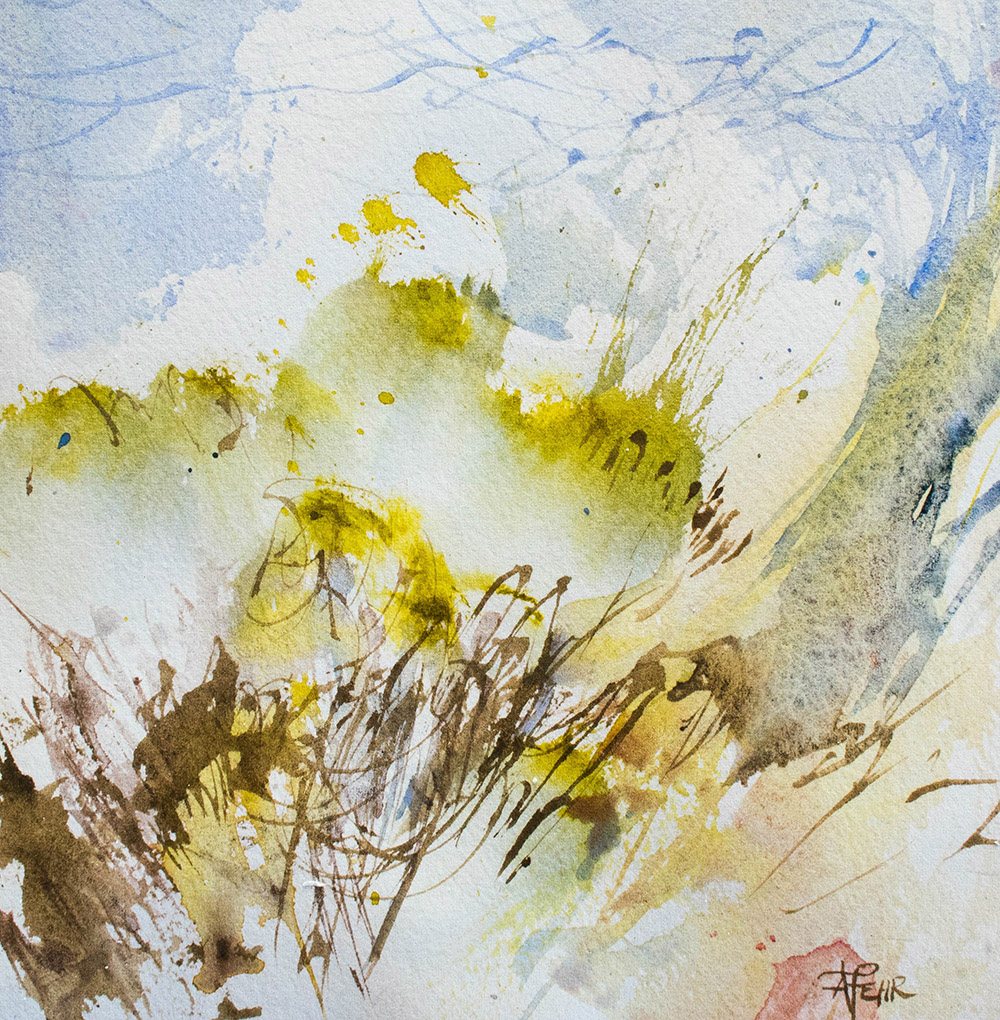Paint More Truth in Your Art by Simplifying
When I first started painting, I put a lot of detail in my paintings. A lot.
It felt like the “right way” to paint. Choose a reference photo, then copy it on paper. Add all the details that you see, and if you get the colours and values right, the objects the right size and in the right place, you have succeeded at painting!
An early landscape painting from my “detail days.”
At the same time, I was reading a book about the prairie to my children, illustrated by an acrylic artist, and that book drove me crazy. The artist had painted every brushstroke with equal detail. Grass blades nearest the viewer were painted in sharp relief, with as much attention to detail as the people in the story, and the far distant trees were as crisp and clear as the wood grain on the nearest fence posts. This book irritated me. I knew this was just too much detail for my preference, and I disagreed with the artist’s choices.
There are people who treasure that style of art, and that’s wonderful. I love that art is so diverse that it can speak to everyone, just not in any single painting! But what I have learned, is that simplicity can be one of the most beautiful ways to express yourself, and there does seem to be a pattern among artists that the pursuit of simplicity is a choice for vulnerability and authenticity.
When I stopped thinking, “I can’t paint that way because no one will understand it,” and just painted what made my heart happy, I found a freedom and joy that I’ve never wanted to lose. And I’ve also embraced that this process simplifies my work, often leaves it unfinished, looks a little messy and doesn’t always make sense.
“Winds of Spring” watercolour on paper, Angela Fehr 2018
I’m not alone. I love quoting Picasso, “It took me four years to paint like Raphael, but a lifetime to paint like a child.” His goal became childlike simplicity!
Monet knew the power of simplicity as well. His advice? “Try to forget what objects you have before you - a tree, a house, a field, or whatever. Merely think, 'Here is a little square of blue, here an oblong of pink, here a streak of yellow,' and paint it just as it looks to you, the exact color and shape, until it gives you your own impression of the scene before you.”
Simplifying your art gives it power.
“The ability to simplify means to eliminate the unnecessary so that the necessary may speak.”
- Hans Hofmann
Simplifying your art makes you vulnerable.
“Vulnerability is the birthplace of innovation, creativity and change.” — Brené Brown
I risk more by simplifying my work, because simplicity can be so misunderstood. I also gain so much, because I get to surround myself with my people, the ones who get me, who are moved by my work and recognize me in it.
Simplifying doesn’t mean plain or boring.
I have simple paintings that were created in minutes, with just a few brush strokes, but I also have paintings that have layers of paint and rich colours, and hours of time invested. Simplicity is found in the foundation and focus of your art.
The foundation: the basic composition, pattern and design. The values chosen to reveal this.
The focus: the idea. What you want your viewer to feel. Showing what you feel in your work.
That’s why often the sketches and warm ups we do can feel so much more alive than the final painting. In moments when we are most relaxed, when we let go of expectations to play and explore, we are almost inadvertently our truest selves.
Spend time every time you painting warming up; that is, teasing out your inner self so it feels free to be revealed on paper. It’s the key to adding more life to your paintings!


